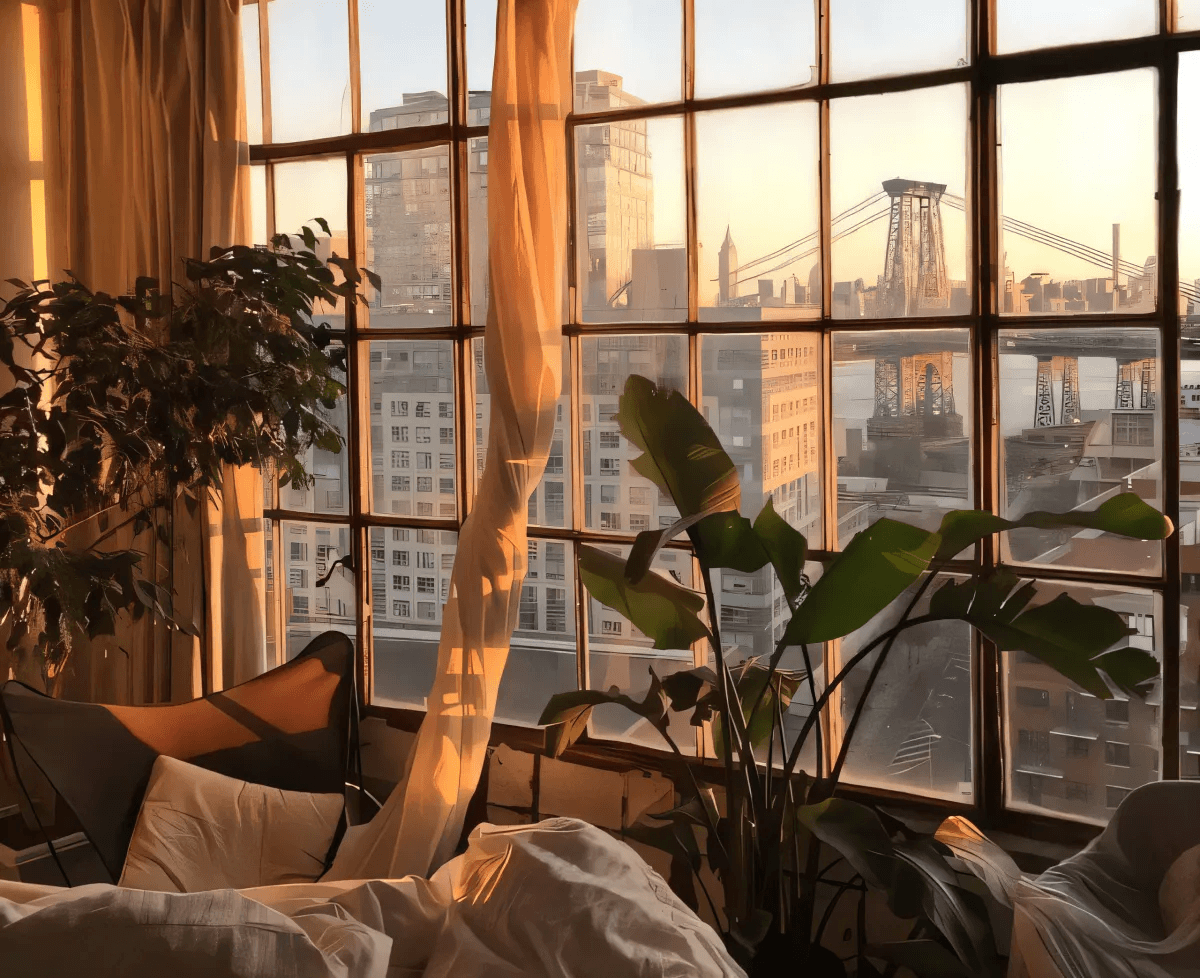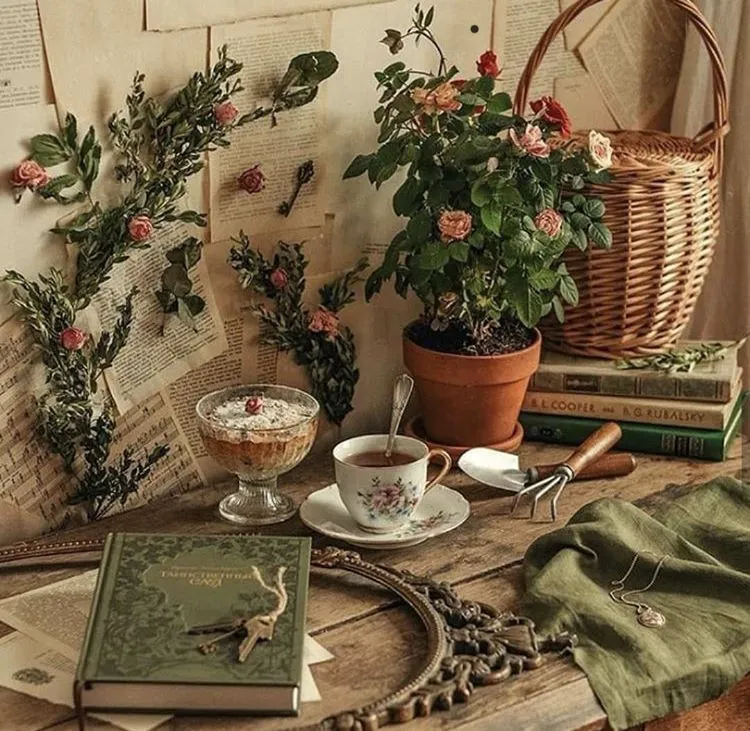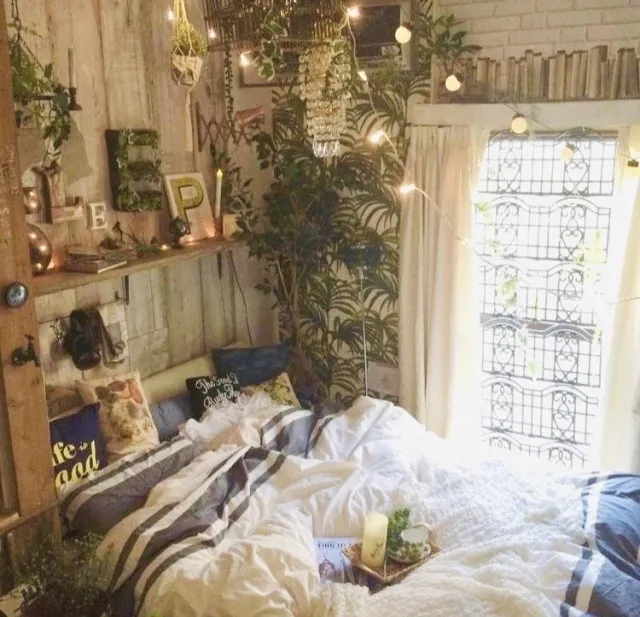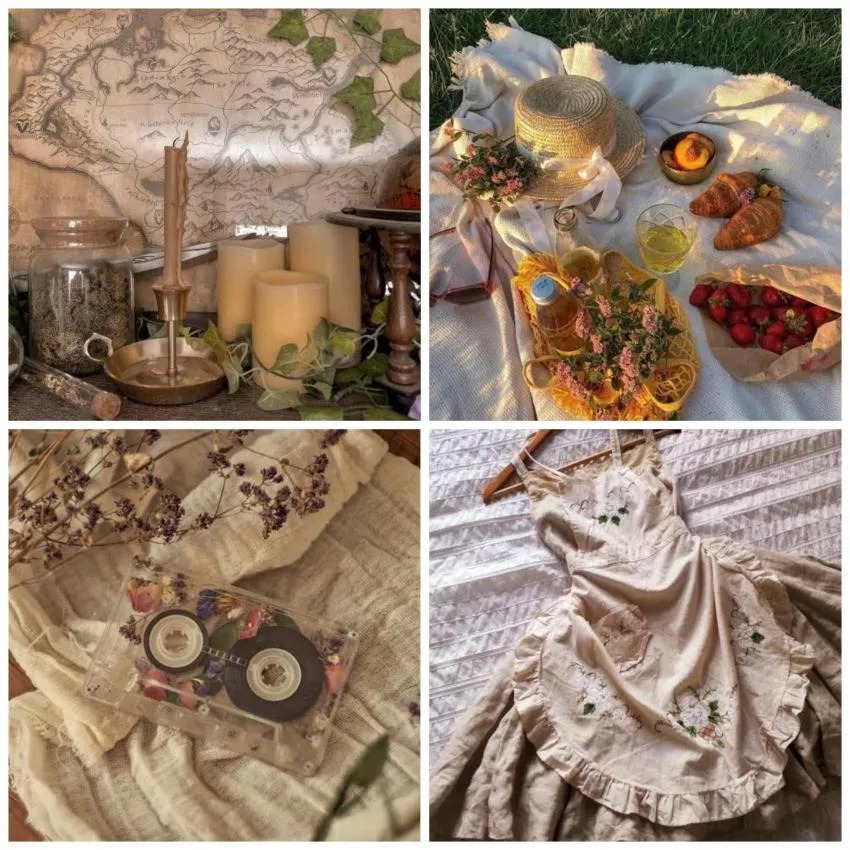Living Cottage Core In A Concrete Jungle

What is Cottagecore?
Cottage Core culture is a set of aesthetics and behaviors, that draws from a romanticized ideal of farm life. It offers a sense of escapism to those that indulge in it. Cottage Core culture also emphasizes the role of natural beauty in our lives, seemingly reconnecting us with nature and its roots.
This aesthetic is characterized by the use of natural colors, such as greens, yellows and pinks, complemented with light woods and warm tones. It is further illustrated with historical fantasy dresses, featuring empire waistlines, light fabrics, frills and ruffles, lace details and so on. Cottage core values vintage fashions, sustainable fabrics, and handmade items. It blends the historical and modern, the minimal and the plenty, the simple and the fun.
The surge in popularity for cottagecore aesthetics stems from growing fatigue toward urban hustle culture. Cottagecore romanticizes rural living as a solution to urban booms and crowds. It longs for a simpler time. Cottagecore culture goes hand in hand with the growing sustainability movement, and the LGBTQ rights movement.
Cottagecore symbolizes a lot of beloved ideas, however, executing an aesthetic that relies on open spaces, nature gazing and frolicking, can be difficult when you live in a cramped apartment, in a loud city, while working a 9 to 5.
How can you be cottagecore in a city?
Here are a few tips to help you bring the cottagecore aesthetic into your life, despite living in an urban landscape, without giving up any of your modern comforts.
1. Use your mornings
Waking up early, before the hustle and bustle of traffic starts, will let you bask in the early morning sunlight, get some fresh air and even hear some birds (probably pigeons, but still cute). This can make you feel more relaxed, and grounded. It will give you a while before having to rush into your worldly duties. Thus, offering the escapism that cottagecore achieves. Pair your early morning with some tea in a tiny ceramic cup and you are good to go!

2. Adopt Some Plants
Plants instantly add some life to your room and make you feel closer to nature. Their green and yellow tones also largely define the aesthetic. However, plants can be hard to maintain in small spaces, if you don't get a lot of natural light. To counter this, you can adopt plant species like the English Ivy or the Maidenhair Fern, among other plants, that don't need much light.
Additionally, try growing a little kitchen garden with herbs like coriander, mint, and lemongrass, to name some. Being able to pluck your own herbs while cooking truly adds to the cottagecore experience.
Lastly, lack of space can make plants a hassle. You can counter this with hanging pot holders, mounted pots, and vertical gardens.

3. Cut technology where you can
Modern technology offers many simple benefits, and no one is expected to give them up. Wanting to cut out technology is not very realistic. However, you can modify a few habits to decrease your use of technology. These habits include letting your hair naturally dry instead of a hairdryer, opting to chop vegetables by hand instead of a food processor, sun drying clothes and other small modifications to your daily routine.
These modifications may be more time consuming but they are quieter, make you feel more productive for longer, and are said to be more beneficial.
4. Stimulate Your other senses
Our current urban lives put a lot of emphasis on visual stimuli, with screens being our main interface. While screen time has become a necessity, try to balance it out by stimulating your other senses.
You can use light acoustic music, or even bardcore covers of pop songs to feel more cottagecore. You can choose to wear light, natural fabrics and surround yourself with wooden, clay or ceramic items to make your aesthetic more tangible.
To further surround your senses, you can burn incense or candles, with natural mossy or floral scents, to make your room smell more fresh and outdoorsy. Lastly, you can taste the simpler life by altering your diet to include more natural ingredients, more fruits and vegetables, hearty comfort foods ,and homemade breads and pastries.

5. Cook Your own food
Preparing your own meals is the most natural activity you could pick. Cut out fast food or processed food as much as you can, and opt to make your own dishes. Try and make soul food that involves a lot of veggies and herbs. There something deeply satisfying about throwing ingredients into a pot and stirring it. Cooking can often be therapeutic. If you do not have a lot of time, try meal prepping in advance or cook large quantities at a time, to last for a few days.
Your meals can be to your liking, but definitely dabble in baking your own bread, making your own jam, trying out different soups and gravy recipes and so on. Feel free to plate up your food with care to elevate your dish.
You can heighten your cottagecore cooking experience by using utensils with wooden touches, using vintage looking serving dishes and cutlery, wearing a fun printed apron and adding soft furnishings to the kitchen area, such as lace mats, flannel oven mitts and more.

6. Pick up small analog hobbies
A huge reason behind turning to a cottage core aesthetic is getting away from the never-ending hustle, and the constant screen time. Most of what we do is through a screen, productive, and is done for a living or for other people.
To embrace a cottagecore lifestyle, pick up small hobbies for yourself. This should be analog in nature, and you should enjoy doing this for yourself. Your overarching goal cannot be to someday capitalize on this hobby.
Examples of such hobbies include sewing, cooking, drawing and painting, learning an acoustic instrument, pottery, writing and so on.

So you can add a bit of cottagecore beauty to your life by integrating some of these habits into your life.
To take things a step forward you could decorate your room with fairy lights, books and plants, wooden furniture and soft natural colored furnishings. Top things off with printed wallpapers and crocheted blankets.
Let the cottagecore aesthetic bring some calming simplicity into your life.
Opinions and Perspectives
The time management tips in the article are helpful but I'd add that batch cooking is essential for city cottagecore life.
Started pressing flowers from my neighborhood walks. Free decor that really adds to the cottagecore vibe.
The suggestion about bardcore music is interesting but I prefer actual folk music for authenticity.
Anyone else struggle with keeping their cottagecore aesthetic organized in a small space?
I appreciate how the article emphasizes that we can adapt cottagecore to our modern lives rather than completely abandoning convenience.
My windowsill mushroom kit brings cottagecore vibes and fresh mushrooms to my kitchen.
Making my own candles has been a fun cottagecore project. Plus I can control the scents.
I've found that focusing on one room at a time makes the transition to cottagecore more manageable.
The article could have included more about foraging in urban environments. There's edible plants in city parks!
Using a French press instead of an electric coffee maker has become my favorite morning ritual.
Remember that cottagecore shouldn't be about perfection. My sourdough isn't Instagram-worthy but it's made with love.
Started fermenting vegetables and it feels very cottagecore plus saves money on groceries.
The natural scents suggestion is lovely but my neighbors complain about incense. Had to switch to essential oil diffuser.
I've turned my radiator cover into a herb garden display. Urban gardening requires creativity!
Found some amazing crocheted blankets at flea markets. Much more affordable than buying new.
The article understates how challenging it is to maintain plants in small spaces with pets around.
Learning to mend my own clothes has been such a satisfying cottagecore activity. Plus it saves money!
The suggestion about ceramic and wooden items is great. I switched all my plastic containers for mason jars.
I wish the article had addressed apartment composting more specifically. Anyone have experience with this?
Successfully growing plants in my bathroom has added so much life to my apartment. The humidity actually helps them thrive.
Making my own cleaning products with vinegar and essential oils has been a game changer. Feels very cottagecore!
I work nights so the morning routine suggestion isn't practical, but I've adapted it to my evening schedule instead.
The article could have mentioned more about small-space composting options. That's a big part of sustainable living.
I've found that thrifting is perfect for achieving cottagecore style without breaking the bank.
The focus on natural fabrics has totally changed how I shop for clothes. Linen and cotton feel so much better than synthetics.
Does anyone else feel like cottagecore is just another way for companies to sell us stuff we don't need?
The suggested color palette really helps create that cozy feeling. I painted my walls a warm cream color and it made such a difference.
I love that cottagecore emphasizes doing things for yourself rather than for social media or profit.
My vertical herb garden has been a lifesaver for space issues. Wall-mounted planters are perfect for small kitchens.
The kitchen tips are great but my tiny apartment barely has counter space. Any suggestions for maximizing small spaces?
I appreciate how the article acknowledges we can't completely abandon modern conveniences. It's about finding balance.
Started drying my clothes on a rack instead of using the dryer. It's more sustainable and adds to that cottage feeling.
The early morning suggestion is spot on. The city feels like a different world at 6 AM.
I struggle with the aesthetics versus practicality. My wooden furniture looks cottagecore but isn't very apartment-friendly.
Just transformed my fire escape into a mini garden oasis. Where there's a will, there's a way!
The part about analog hobbies really speaks to me. I picked up embroidery and it's such a nice break from screens.
I find using a white noise machine with nature sounds helps create that peaceful cottage atmosphere, even with city noise outside.
What about noise pollution though? Hard to feel cottagecore with constant traffic and sirens outside.
I've started making my own jam and it's nowhere near as difficult as I thought it would be. Plus it tastes way better than store-bought!
The article makes cottagecore seem accessible, but some of these suggestions feel pretty privileged. Not everyone has space for plants or time for baking.
My windowsill herb garden has been a game changer. There's something so satisfying about using fresh herbs I grew myself.
Anyone else find it interesting how cottagecore intersects with sustainability and LGBTQ movements? I'd love to learn more about that connection.
The acoustic music suggestion is brilliant. I created a playlist of bardcore covers and it makes working from home feel magical.
Actually, I've found that slowing down with manual tasks helps me decompress after work. It's all about choosing which elements work for your lifestyle.
These are lovely ideas but let's be real, who has time to hand-dry their hair and chop vegetables manually when working full time?
I've found that baking bread is surprisingly therapeutic, even in my small kitchen. The smell alone transforms my whole apartment into a cozy cottage.
My maidenhair fern died within a week! I think I'll stick to fake plants for now, but at least they add that cottagecore vibe without the maintenance.
The plants suggestion is great but my apartment gets terrible light. Has anyone had success with those plants mentioned in the article, like English Ivy?
While I appreciate the aesthetic, I think we need to be careful about romanticizing rural life too much. As someone who grew up on a farm, it's not all fresh bread and flower picking.
The idea of cutting back on technology where possible makes so much sense. I started hand-washing my dishes instead of using the dishwasher and it's actually become a peaceful part of my day.
I love how this article breaks down cottagecore for city dwellers. I've been trying to incorporate these elements into my tiny apartment and the early morning routine suggestion really resonates with me.
